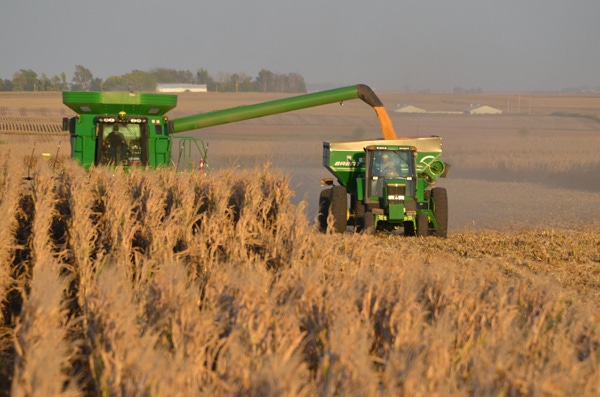August 14, 2015

Data to drive management decisions is becoming more important as increasingly sophisticated analysis services come online.
“The analysis you can get on hybrids, fertility and other management programs is only as good as the data allows,” says Matt Darr, a precision agriculture specialist at Iowa State University. “Benchmarking services require good data, which is tied directly to the quality and timing of yield calibration.”
A well-calibrated yield monitor can assess yields to within +/- 3%, says Darr. A poorly calibrated monitor can have a margin of error of +/- 10%, particularly in fields where yields vary significantly.
Calibrate at least 3 times per harvest
The yield monitor calibration process hasn’t changed since the first yield monitors, says Darr, who recommends consulting your owner’s manual for details. “You have to calibrate every year and for every crop, and calibrate again as crop moisture changes.”
That boils down to recalibrating at least three times when harvesting corn and soybeans. Typically, soybeans require a single calibration annually. Corn normally requires two calibrations, one early season and one mid-way through harvest. A 4-percentage-point change in crop moisture is the break point when it’s time to recalibrate.
All that takes precious time during the busy harvest season, when it’s tempting to cut corners, he says.
“The biggest problem is that growers often don’t take yield calibration points across the entire range of grain flow,” he says. “You need high and low flow rates. That takes time.”
To control for differing mass flow rates, you have to be married to calibration protocol. “A good recommendation is to harvest as fast as possible during the first calibration load,” says Darr. “Then back off in 25% increments, 4 mph, 3 mph, 2 mph and 1 mph, for example, for each successive calibration load.”
Data accuracy requires time spent
In corn, plan to spend about an hour each time you calibrate. In soybeans, calibration can take a couple of hours or more.
“In soybeans, to harvest a full 100-bushel calibration load, you may need to harvest 3 acres,” says Darr. “At 1 mph, that’s not a lot of fun, but it is critical for good yield maps.”
One common misconception is that adding more calibration loads improves accuracy. “More calibration loads only help if they are spread across the flow rate ranges you will harvest,” says Darr. “Even in consistent crop, you will see variations in flow rate caused by machine speed changes due to terrain, unloading on the go, or other in-field demands.”
About the Author(s)
You May Also Like






